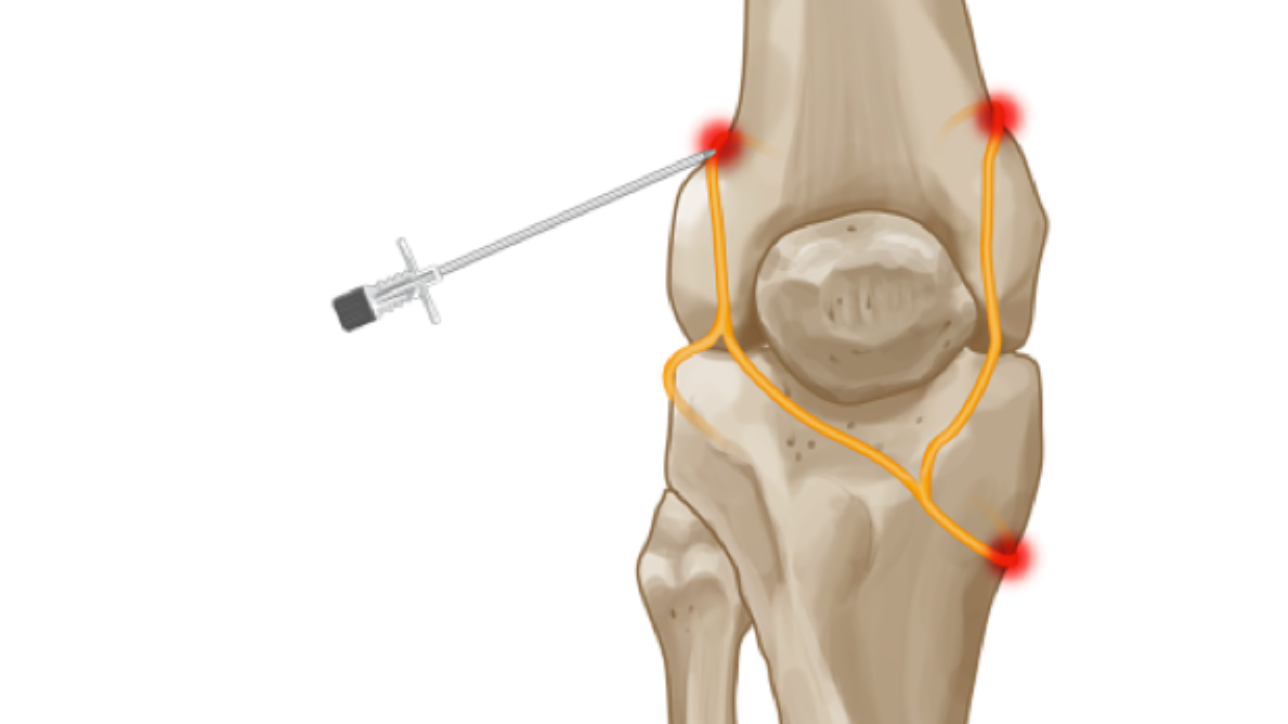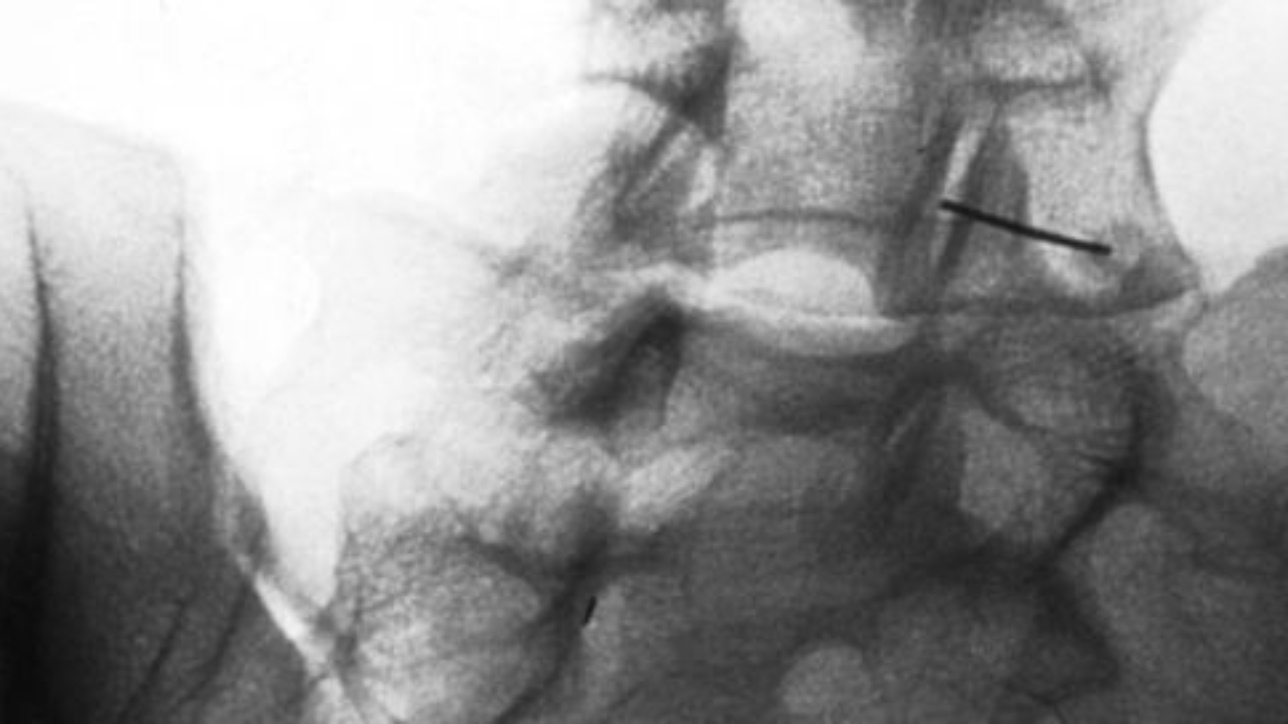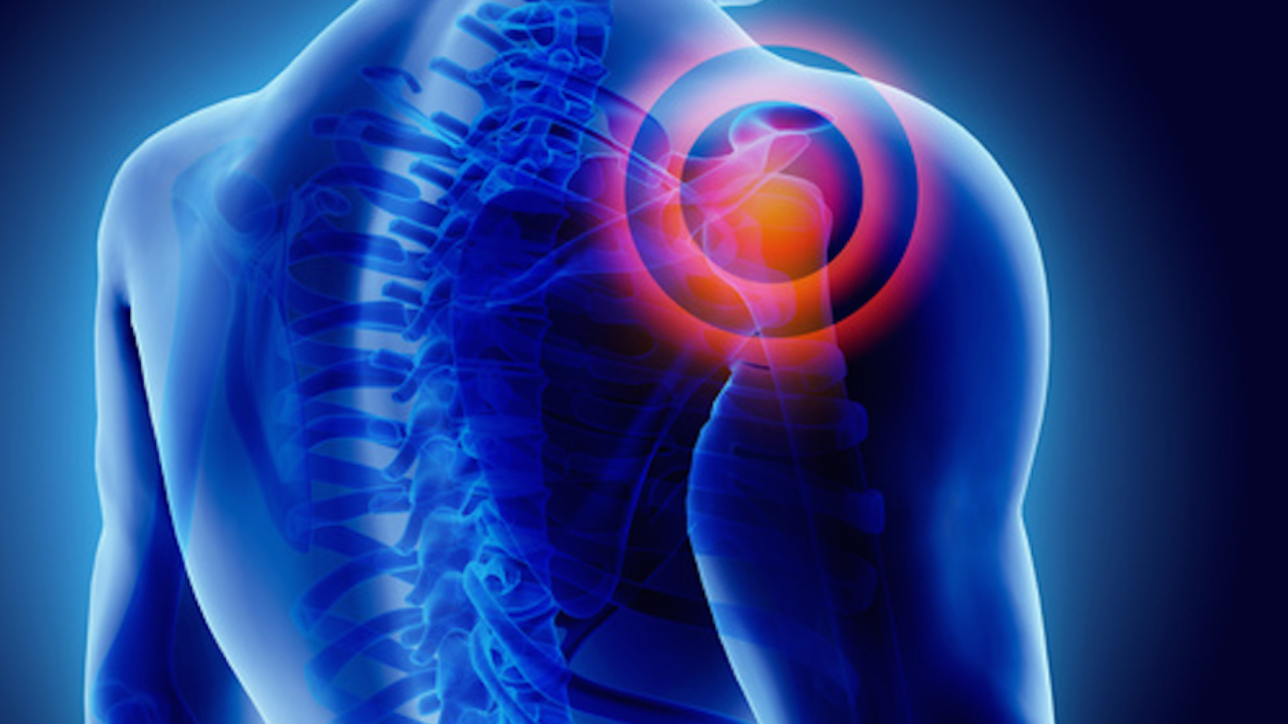Genicular nerve blocks target the nerves which supply the knee. This minimally invasive technique can be performed as a day case procedure under local anaesthetic and light sedation. It does not involve injecting any steroid into the knee joint itself. Local anaesthetic and steroid are injected around these three sensory nerves using ultrasound or x-ray guidance. If a good response to these diagnostic injections is achieved, a denervation procedure may be offered. Genicular nerve denervation involves placing special needles alongside these nerves, which can be heated up at their tip to create a gap lesion in the three genicular nerves. This may produce significant longer lasting pain relief. This can be very useful for younger patients with osteoarthritis, who wish to delay having a knee replacement or for older patients with significant other health problems that are not suitable for a knee replacement.
Low Back Pain – Lumbar facet joint pain
figure – Intra-articular facet joint block
A lumbar medial branch block (MBB) or an intra-articular facet joint injection is a diagnostic procedure used to determine the potential cause of chronic lower back pain related to the lumbar area of the spinal column. It involves injection of a local anaesthetic and steroid either into the joint, or directed to nerves innervating these joints. The nerves exist in pairs on the posterior portion of the spinal column. The only function of these small nerves is to carry pain signals from the area of the facet joint toward the brain. Facet joints are found posteriorly (or behind) and in between the vertebrae. These joints stabilize the spine and allow or limit rotation of the spine.
When a facet joint is irritated, inflamed, or damaged, either by trauma or a degenerative condition like osteoarthritis, it may lead to pain involving the buttocks, abdomen, low back, groin, and legs. If a lumbar medial branch block does not decrease pain levels, the facet joint is most likely not the origin of back pain. If a lumbar medial branch block produces a dramatic decrease in pain levels, the facet joint is most likely the reason for the back pain. Thus, the initial diagnostic block is indicated to help define the primary source of the pain. If positive, then a procedure called a radiofrequency (RF) denervation that heats and lesions the nerve supplying the facet joint, can be performed to extend the pain relief benefits derived from the initial diagnostic procedure.
Citation: Jadon A (2016) Low Back Pain due to Lumbar Facet Joint Arthropathy and its Management. Gen Med (Los Angeles) 4:252. doi: 10.4172/2327-5146.1000252
Treatments for shoulder pain
Conditions such as arthritis of the shoulder joint or disorders of the four rotator cuff muscles and tendons that stabilise the shoulder are common causes for shoulder pain. Treatments for shoulder pain may include physiotherapy, steroid injections into the joint or even surgery. When conservative measures have failed to provide significant benefit a minimally invasive treatment called a suprascapular nerve block may be beneficial. This involves injecting this local anaesthetic and a long acting steroid around the nerve using ultrasound or x-ray to guide the needle accurately to the correct location. This may provide improved analgesia, enabling the patient to perform their physiotherapy and rehabilitation. This treatment option is also suitable for patients who are not suitable or do not wish to proceed with surgery.





